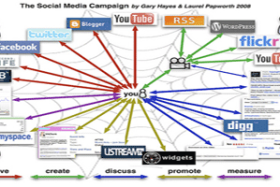Link Building

Link building is a very important part of SEO. Inbound links are still up 62% of the capacity of a site to rank, more than any other factor. As a result, the deployment of an active link building campaign is essential to any deployment of SEO. Here are 5 effective techniques for enhancement of the links that will not get you into trouble with Google.
Reciprocal link
A reciprocal link is a mutual link between two objects, commonly between two websites to ensure mutual traffic. For example, Alice and Bob have websites. If Bob’s website links to Alice’s website, and Alice’s website links to Bob’s website, the websites are reciprocally linked. Website owners often submit their sites to reciprocal link exchange directories in order to achieve higher rankings in the search engines. Reciprocal linking between websites is no longer an important part of the search engine optimization process.Google and other search engines now do not give credit to reciprocal linking as it does not indicate genuine link popularity.
Resource linking
Resource links are a category of links, which can be either one-way or two-way, usually referenced as “Resources” or “Information” in navbars, but sometimes, especially in the early, less compartmentalized years of the Web, simply called “links”. Basically, they are hyperlinks to a website or a specific webpage containing content believed to be beneficial, useful and relevant to visitors of the site establishing the link.
In recent years, resource links have grown in importance because most major search engines have made it plain that—in Google’s words– “quantity, quality, and relevance of links count towards your rating.”
The engines’ insistence on resource links being relevant and beneficial developed because many artificial link building methods were employed solely to “spam” search-engines, i.e. to “fool” the engines’ algorithms into awarding the sites employing these unethical devices undeservedly high page ranks and/or return positions.
Despite cautioning site developers (again quoting from Google) to avoid “‘free-for-all’ links, link popularity schemes, or submitting your site to thousands of search engines (because) these are typically useless exercises that don’t affect your ranking in the results of the major search engines — at least, not in a way you would likely consider to be positive,” most major engines have deployed technology designed to “red flag” and potentially penalize sites employing such practices.
Forum signature linking
Forum signature linking is a technique used to build backlinks to a website. This is the process of using forum communities that allow outbound hyperlinks in a member’s signature. This can be a fast method to build up inbound links to a website; it can also produce some targeted traffic if the website is relevant to the forum topic. It should be stated that forums using the nofollow attribute will have no actual Search Engine Optimization value.
Blog comments
Leaving a comment on a blog can result in a relevant do-follow link to the individual’s website. Most of the time, however, leaving a comment on a blog turns into a no-follow link, which is almost useless in the eyes of search engines, such as Google and Yahoo! Search. On the other hand, most blog comments get clicked on by the readers of the blog if the comment is well-thought-out and pertains to the discussion of the other commenters and the post on the blog.
Directory link building
Website directories are lists of links to websites, which are sorted into categories. Website owners can submit their site to many of these directories. Some directories accept payment for listing in their directory, while others are free.
